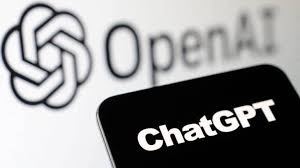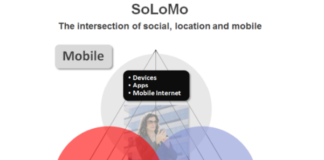In a groundbreaking move, OpenAI has recently announced the integration of voice and image capabilities into ChatGPT, marking a significant expansion of the AI system’s interactions. These innovative features are designed to enable users to engage in voice conversations and share images with ChatGPT, enhancing the platform’s intuitiveness and utility.



Voice Interaction: A Conversational Experience
OpenAI’s introduction of voice interaction transforms ChatGPT into a conversational partner. Leveraging a text-to-speech model and the Whisper open-source speech recognition system, users can now engage with ChatGPT through natural, spoken language.
1. Seamless Conversations
Users can enjoy seamless dialogues with ChatGPT, fostering a more intuitive and interactive user experience. This feature facilitates a wide array of applications, from creative brainstorming to educational interactions.
2. Accessibility Advancements
Voice interaction opens new doors for accessibility-focused applications. Individuals with disabilities can benefit from a more inclusive digital environment, promoting equal access to information and assistance.
3. Enhancing Productivity: Voice-Powered Task Automation
Voice interaction in ChatGPT extends beyond conversations, offering practical applications in enhancing productivity. Users can now dictate tasks, set reminders, draft emails, or create to-do lists seamlessly. This hands-free approach to task management streamlines workflows, allowing professionals to focus on high-value activities while routine tasks are efficiently managed by ChatGPT. By integrating voice-powered automation into daily work routines, professionals can optimize their time and achieve higher efficiency, making voice interaction an invaluable asset in the realm of productivity tools.
4. Building Emotional Connections Through Voice
Voice interaction not only adds a layer of convenience but also establishes emotional connections between users and AI. The warmth and naturalness of human speech create a more engaging and relatable experience. Users can share their thoughts, stories, and emotions with ChatGPT in a way that feels personal and empathetic. Whether it’s journaling, storytelling, or seeking emotional support, ChatGPT’s voice interaction provides a supportive space for users to express themselves authentically. This emotional connection enhances user satisfaction, making the AI interaction a meaningful and enriching experience.
These two additional subheadings explore the practical applications of voice interaction in enhancing productivity and establishing emotional connections, showcasing the depth of ChatGPT’s capabilities beyond traditional conversational interactions.
Image Recognition: Enhancing Visual Interactions
In addition to voice interaction, OpenAI has integrated image recognition capabilities into ChatGPT. Users can now share images with the AI system, leading to diverse applications such as troubleshooting, meal planning, and work-related data analysis.
1. Versatile Image Sharing
ChatGPT’s image recognition function allows users to share images for various purposes. Whether it’s seeking troubleshooting assistance or brainstorming creative ideas, users can convey concepts more effectively through visuals.
2. Focus and Precision
The integration includes a drawing tool on the mobile app, enabling users to highlight specific parts of an image. This feature enhances communication precision, ensuring that users can direct ChatGPT’s attention to particular details within shared images.
Rollout Strategy: Ensuring Safety and User Feedback
OpenAI has adopted a phased rollout strategy for these features, initially offering them to Plus and Enterprise users. This approach aligns with OpenAI’s commitment to ensuring the safe and beneficial use of Artificial General Intelligence (AGI). By deploying new features gradually, OpenAI can assess real-world usage and gather user feedback for potential refinements and improvements.
1. Safety Measures
While these advancements mark significant progress, OpenAI acknowledges the challenges associated with realistic synthetic voices and vision-based models. Concerns such as impersonation, fraud, and misinterpretation of images in critical domains have been addressed. OpenAI is dedicated to implementing robust safety measures to mitigate these risks effectively.
2. User Guidelines
OpenAI has provided clear guidelines to users, emphasizing the limitations of ChatGPT, especially in specialized fields requiring expertise. Users are encouraged to verify information from reliable sources, ensuring the accuracy of responses related to specific topics.
3. Ethical Considerations: Addressing Bias and Discrimination
OpenAI recognizes the importance of addressing potential biases and discrimination in AI interactions. As ChatGPT interacts with a diverse range of users, there’s a commitment to ensuring fairness and impartiality. Continuous efforts are made to identify and rectify biases in responses, promoting inclusivity and equal treatment for all users.
Ethical AI Development
OpenAI invests in ongoing research and development to enhance ChatGPT’s understanding of diverse cultural contexts and languages. By fostering a global perspective, ChatGPT aims to provide respectful and culturally sensitive responses, avoiding inadvertently biased or discriminatory content.
4. Transparency and Accountability: OpenAI’s Commitment to Users
OpenAI places transparency and accountability at the core of its AI development. Users can expect clear communication regarding the capabilities and limitations of ChatGPT. Regular updates and insights into the technology’s progress are provided, ensuring users are well-informed about the AI system’s functionalities.
Accountable AI Practices
OpenAI maintains an open channel for user feedback and concerns. User input is invaluable in refining ChatGPT’s responses and ensuring that it aligns with user expectations. By actively engaging with user feedback, OpenAI demonstrates its dedication to accountable AI practices, fostering trust and reliability among users.
These initiatives highlight OpenAI’s proactive approach in promoting ethical AI interactions, transparency, and user involvement in shaping the future of ChatGPT.
Conclusion: OpenAI’s Vision for Enhanced Interactions
OpenAI’s introduction of voice and image features in ChatGPT signifies a remarkable step forward in AI technology. By empowering users with natural language conversations and visual interactions, OpenAI is shaping a future where AI systems seamlessly integrate into everyday life. Through careful rollout strategies, safety measures, and user guidelines, OpenAI is pioneering the way towards a more intuitive, accessible, and trustworthy AI experience for all.









